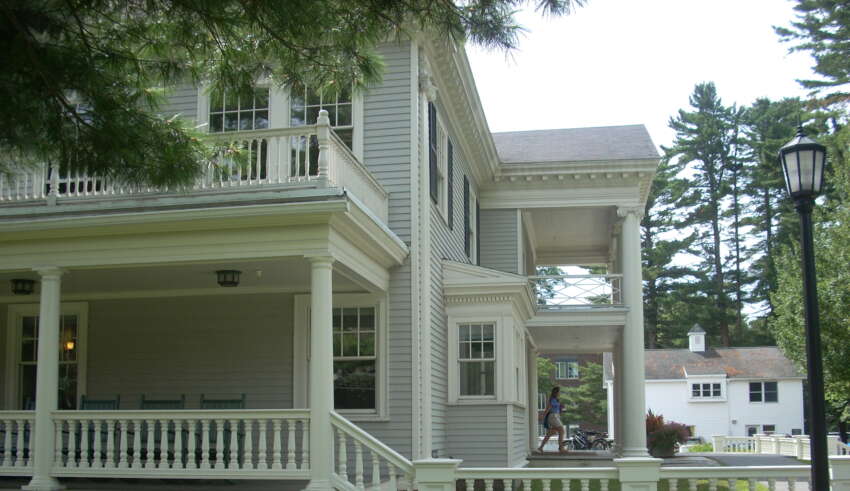
Education and culture
The Boston Brahmins brought education and culture to New England. These men (and women) of wealth helped to create some of the finest and most prestigious educational institutions in the United States. Institutions such as Harvard and Yale were even competing for prestige with old, established
European universities. The Brahmins also played a key role in establishing the Boston Symphony Orchestra and the fine museums of Boston. The arts of New England flourished during the early years of American life after the arrival of the Europeans. A class of people was established with the time and inclination to read novels, attend concerts, and wander through art galleries and museums. European traditions were being honored. Sadly, one of my ancestors, Thomas Hastings, was among the most influential New Englanders in declaring that European music was worthwhile, while American-originating music was worthless.
The Native American traditions were particularly dismissed as being primitive and unworthy. Only the names of Indigenous tribes remained. These names were assigned to specific rivers, mountains, and regions. While one might hope that Worth resided in the assignment of these names, there was rarely any widespread acknowledgement of the contributions made by specific Native American leaders or entire tribes to the “deep history” of the North American continent (Graeber and Wengrow, 2021)
With all this upper-class emphasis on education and culture, we also see, as just noted, the first increase in public access to these features of New England culture. The transcendental tradition, for instance, was led by men such as Emerson and Thoreau, who envisioned and advocated for a more democratized society. A New Englander, Noah Webster, was making knowledge about the English language accessible to the general public. His dictionary was now found alongside the Bible in most New England homes. Mass production of schoolbooks was in play. We soon found The New England Primer and McGuffey Reader on public (and private) school desks.
While higher education was being provided in many New England states only by prestigious and highly selective private colleges and universities, some of the first public primary and secondary educational institutions in the United States were established in these states. Notably, the Boston Latin School was founded in 1635. This school is the first public school and the oldest existing educational institution in the United States. As the first free taxpayer-supported public school in North America, the Mather School, was opened in Dorchester, Massachusetts, in 1639. Worth was now beginning to be assigned to the level of education attained. Previously, education was taken for granted among those in the upper class. It was not assigned independent worth. It was not possible to obtain a degree without being well-to-do. The “self-made man” (not woman) could be found among those acquiring an education despite coming from humble beginnings.
Of greatest importance, however, in the lives of our Mill Girls was the creation of culture in the small communities of New England. This is where education and the arts began to flourish for residents of these communities. No Boston Brahmins lived in the Berkshire communities of western Massachusetts or other small, remote New England communities (like the fictitious Grover’s Corner portrayed in Thornton Wilder’s Our Town). Furthermore, the mills may have been owned by the Brahmins, but these men and women of wealth were living elsewhere. They rarely left the rarified atmosphere of Boston—and talked to no one other than fellow Brahmins and (apparently) God.
As we still see in remote North American communities, the local arts are flourishing. Collective Worth is being created in community theaters, main street art festivals, and farmers’ markets. Collective Worth is still found in small American communities—and in the isolated ethnic (ghetto) communities that remain inside some American cities. We are touching on a critical point regarding the nature of a bridge between Personal and Collective Worth. This bridge requires intimacy and closely held resources. I wish to dwell a bit more on the communities identified by de Tocqueville as a way to gain some understanding of this bridge.







